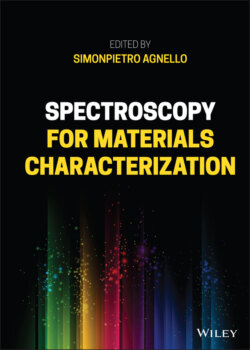Читать книгу Spectroscopy for Materials Characterization - Группа авторов - Страница 64
3.4.3 FLUC: Data Analysis and Interpretation
ОглавлениеData collected in a FLUC experiments are usually single‐wavelength traces. The treatment and correction of the data involve, as for the TA, the definition of a common zero time for all the kinetics, the GVD correction, and an assessment of the temporal resolution. A useful technique to measure the temporal resolution is the measurement of the temporal evolution of a Raman signal of a pure solvent. Because Raman scattering is essentially instantaneous, the temporal width of the Raman signal corresponds to the IRF of the experiment and it can be used to calibrate the experiment. After these preliminary procedures, the results can be treated by GA methods similar to what discussed above for TA, although FLUC data are generally much easier to interpret, inasmuch as they are much less affected by spectral congestion issues, and only contain one type of signal, that is spontaneous emission. In fact, many FLUC signals essentially consist in a single time‐dependent fluorescence band, or a few with no mutual overlap. In this case, FLUC data are often simpler to analyze by direct band integration methods (e.g. moment analysis), leading to very straightforward interpretations. For example, one popular application of FLUC is probing solvent relaxations around a chromophore through the observation of picosecond and femtosecond dynamical Stokes shift induced on its fluorescence band. This approach has proven very valuable to analyze solvation dynamics in water [3], and hydration dynamics around proteins, a problem of great biological importance [4, 44].
